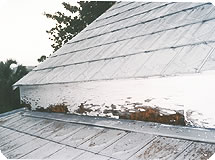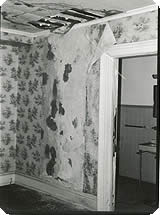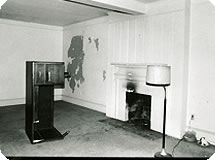Changes to the key west naval station
The Key West Naval Station had been a strategic training center with naval submarines, naval surface craft and naval aviation, but Key West, since its founding in the early 1820s, had been subject to the ebb and flow of America’s military needs. President Truman’s death on December 26, 1972, caused both the naval personnel and the citizens of Key West wanting to honor the memory of their favorite adopted son. Mrs. Bess Truman and the US Navy approved a name change for the portion of the Base containing the Little White House to the Harry S. Truman Annex, Naval Air Station, Key West. The Navy’s Public Works Department drafted plans to create a presidential museum in Quarters A – The Little White House.
The Little White House was individually listed on the National Register of Historic Places in February 1974. It was a major contributing building in the Key West Historic Naval District in 1974 and in the City of Key West Historic District in 1984.
Unfortunately, changing technologies forced the closure of the Key West Submarine Base equipped with diesel submarines in favor of other naval bases equipped with more advanced larger nuclear powered submarines. On March 31,1974, the Key West Submarine Base was official disestablished. Within a few months the Little White House was boarded up and abandoned with the hope that the City of Key West or possibly the county or state would open it as a presidential museum.
Abandonment in the tropics proved to be disastrous. Roofs leaked, ceilings collapsed and vandals broken in and stole small objects. Much of the original furnishings were left in the house in storage. Only the rarest artifacts, the president’s poker table and president’s piano, were stored at the Key West Art and Historical Society’s East Martello Towers Museum.
Photo
In 1979, Key West Mayor Charles (Sonny) McCoy and Florida Senator Richard Stone proposed to the Carter’s administration that the Little White should be restored and used as a second presidential retreat, comparable with Camp David. This would promote Key West economy that had been hard hit by the navy’s withdrawal. Carter, attempting to trim the federal budget, was not interested in adding a second Camp David and the site remained abandoned.
The US Department of Interior was aware of a number of historic buildings on the former naval station and required preservation and adaptive re-use for nineteen naval structures by the potential developer. In April, 1986, the General Services Administration declared the former submarine base to be surplus land and offered it for sale at public auction on September 10, 1986. The winning bidder was Pritam Singh, a Maine developer, for the sum of $17.4 million. The Little White House might well have been converted into condominiums or even the lobby of a hotel. The Governor and cabinet of Florida immediately began protective measures. On January 1, 1987, in exchange for other development rights, the Little White House building and an acre of land were transferred to the State and named a Florida State Historic Site. It has since been declared a Florida Heritage Landmark because of its national historic importance.
It became evident over the coming months, the twelve years of abandonment had been costly and destructive to the house. Lacking the manpower and the necessary funds to restore the house, the State and Mr. Singh created an agreement for the private restoration of the site. Mr. Singh hired Arva Parks of Miami and Elizabeth Ehrbar of Tallahassee to lead the preservation efforts. This Herculean- task was completed in 1990 and the house was restored to a reasonable facsimile of the 1949 Truman Era remodeling that had been conducted by Miami interior decorator Haygood Lasseter.
The $1 million budget proved inadequate and some compromise was necessary to order to open the house to the public.
Thus began the need for Phase II of the restoration.


